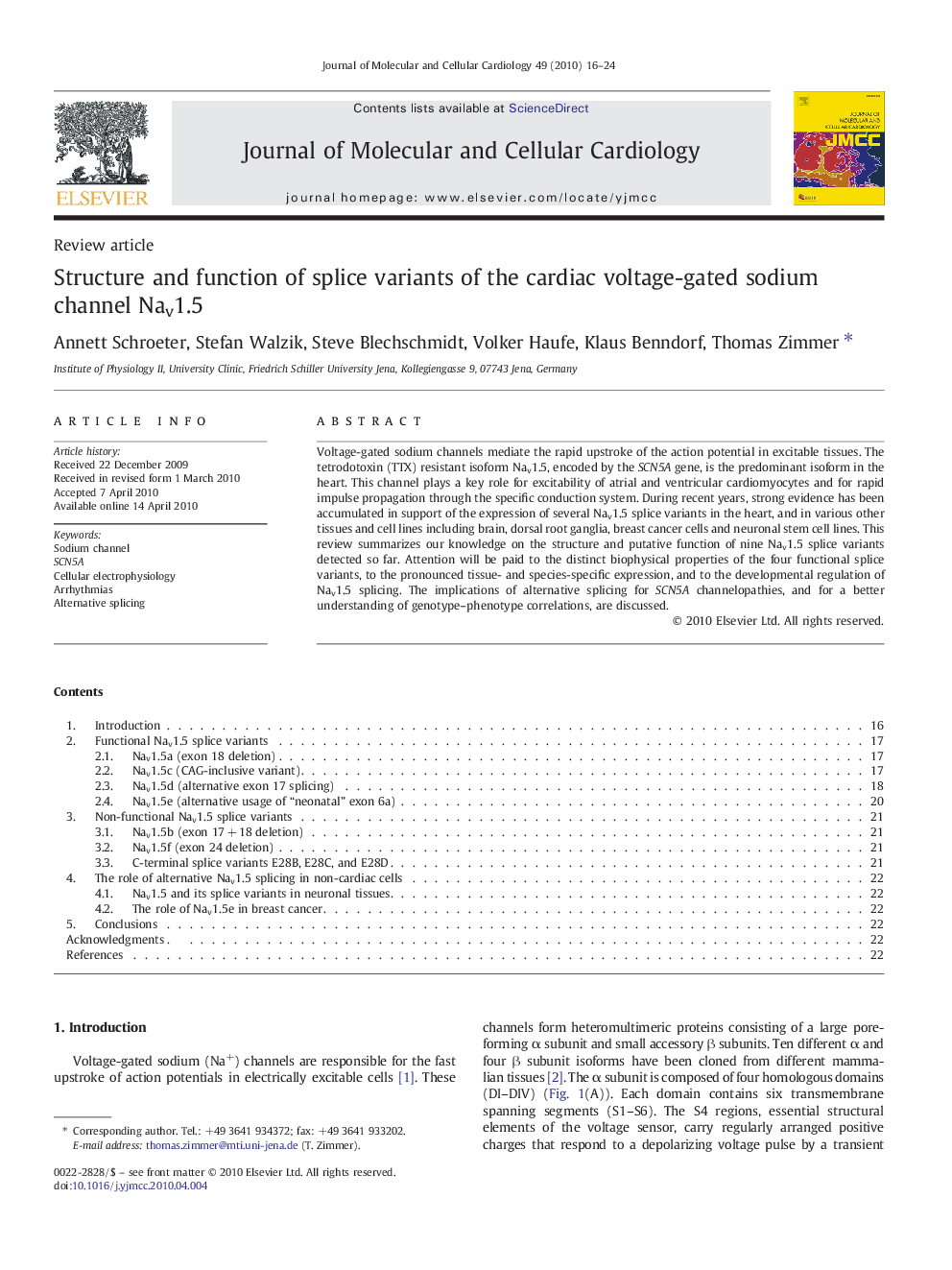| Article ID | Journal | Published Year | Pages | File Type |
|---|---|---|---|---|
| 10954008 | Journal of Molecular and Cellular Cardiology | 2010 | 9 Pages |
Abstract
Voltage-gated sodium channels mediate the rapid upstroke of the action potential in excitable tissues. The tetrodotoxin (TTX) resistant isoform Nav1.5, encoded by the SCN5A gene, is the predominant isoform in the heart. This channel plays a key role for excitability of atrial and ventricular cardiomyocytes and for rapid impulse propagation through the specific conduction system. During recent years, strong evidence has been accumulated in support of the expression of several Nav1.5 splice variants in the heart, and in various other tissues and cell lines including brain, dorsal root ganglia, breast cancer cells and neuronal stem cell lines. This review summarizes our knowledge on the structure and putative function of nine Nav1.5 splice variants detected so far. Attention will be paid to the distinct biophysical properties of the four functional splice variants, to the pronounced tissue- and species-specific expression, and to the developmental regulation of Nav1.5 splicing. The implications of alternative splicing for SCN5A channelopathies, and for a better understanding of genotype-phenotype correlations, are discussed.
Related Topics
Life Sciences
Biochemistry, Genetics and Molecular Biology
Cell Biology
Authors
Annett Schroeter, Stefan Walzik, Steve Blechschmidt, Volker Haufe, Klaus Benndorf, Thomas Zimmer,
